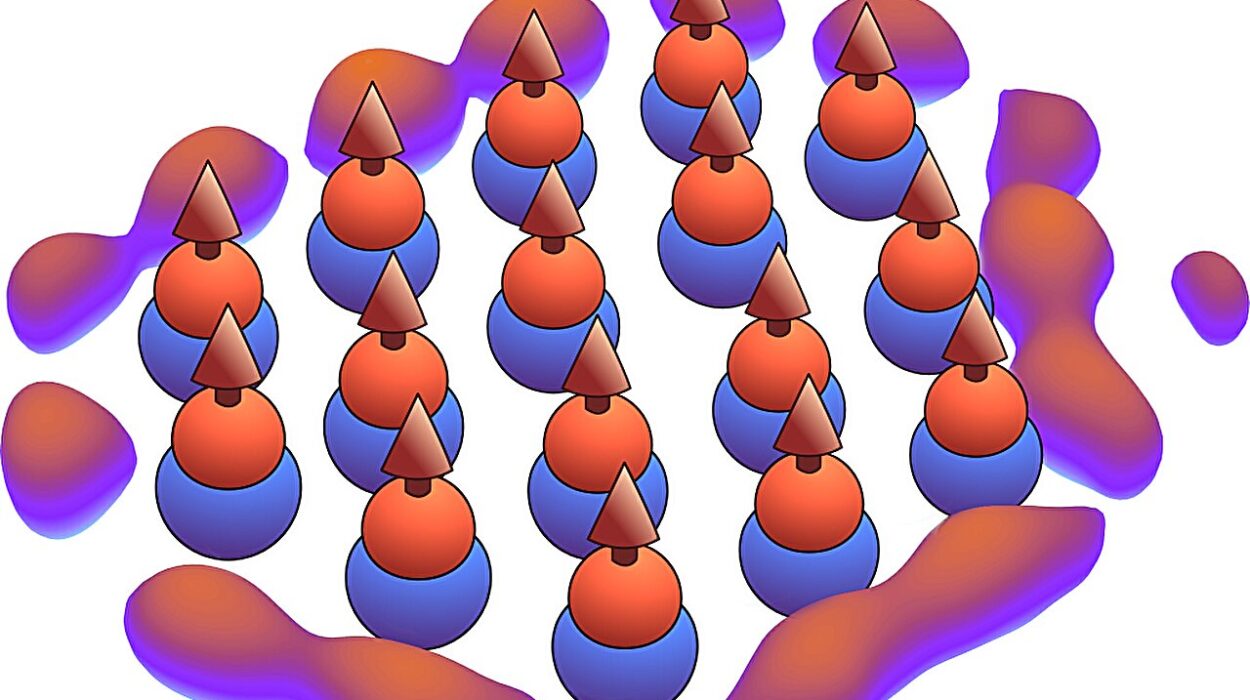Weather surrounds us every day, shaping our moods, activities, and even our survival. The sun’s warmth on a spring morning, the sudden crack of thunder on a summer afternoon, the crisp chill of a winter night—all of these experiences are manifestations of complex physical processes playing out on our planet. Weather is a dynamic dance of energy, air, water, and Earth’s rotation, all governed by the fundamental laws of physics. Understanding these forces is key to unlocking the mysteries of climate, predicting storms, and addressing the profound challenges of climate change.
This article embarks on a journey through the physical principles that drive weather and climate, exploring how energy flows through the atmosphere, how air moves, and how the Earth’s natural systems intertwine. We will dive into thermodynamics, fluid dynamics, radiation, and much more, all woven into the vibrant tapestry that creates our daily weather and long-term climate.
The Foundation: Energy from the Sun
The story of weather begins with the Sun. Our star is the primary engine powering the Earth’s climate system. Solar radiation delivers an immense flow of energy, warming the Earth’s surface and atmosphere unevenly. This uneven heating sets the stage for the complex phenomena we call weather.
Sunlight arrives mainly as shortwave radiation—visible light and ultraviolet energy. When this radiation strikes the Earth’s surface, it warms the land and oceans. The Earth, in turn, emits energy back into space, but at longer wavelengths, mostly infrared radiation. This process of energy absorption and re-emission is fundamental to the planet’s energy balance.
However, the Earth’s surface is not uniform. Equatorial regions receive more direct sunlight year-round, while polar regions get less. The tilt of the Earth’s axis causes seasonal variations in solar heating. These differences in energy input create temperature gradients—differences in warmth across the globe—which drive atmospheric motions.
Thermodynamics: The Heat Engine of Weather
At the heart of weather phenomena lies thermodynamics, the branch of physics that deals with heat, work, and energy transfer. The atmosphere behaves like a giant heat engine, redistributing energy from warmer to cooler regions.
Warm air is less dense than cold air, so heated air near the surface tends to rise in a process called convection. As air rises, it expands due to decreasing atmospheric pressure and cools—a process described by the adiabatic lapse rate. If the rising air cools to its dew point, water vapor condenses into liquid droplets, forming clouds and precipitation.
This cycle of heating, rising, cooling, condensation, and falling precipitation powers storms and winds. The release of latent heat during condensation adds energy to the atmosphere, intensifying storms. Hurricanes, for example, derive their tremendous power from latent heat released by condensation over warm ocean waters.
Thermodynamics also explains the formation of temperature inversions, where a layer of warm air traps cooler air near the surface, often leading to fog or pollution buildup. Understanding how energy moves and changes phase in the atmosphere is fundamental to meteorology.
Fluid Dynamics: Air on the Move
The atmosphere is a fluid, and its movement follows the principles of fluid dynamics. Air currents flow due to pressure differences created by uneven heating. These flows range from gentle breezes to jet streams moving at hundreds of kilometers per hour.
One of the central forces controlling air movement is the pressure gradient force, which pushes air from high-pressure areas to low-pressure areas. However, because the Earth rotates, the Coriolis effect deflects moving air to the right in the Northern Hemisphere and to the left in the Southern Hemisphere, curving winds and creating rotating weather systems.
The combination of pressure gradients, Coriolis force, and friction leads to the formation of cyclones and anticyclones—large rotating weather systems that dominate weather patterns. Low-pressure cyclones are associated with stormy weather, while high-pressure anticyclones bring calm and clear conditions.
Understanding these forces allows meteorologists to predict wind patterns, storm paths, and even the behavior of large-scale phenomena such as monsoons and trade winds.
Water in Its Many Forms: The Hydrological Cycle
Water vapor is a crucial player in weather and climate. The hydrological cycle—the continuous movement of water through evaporation, condensation, precipitation, and runoff—links the ocean, atmosphere, and land in a seamless system.
Evaporation from oceans, lakes, and rivers injects moisture into the air. As this moist air rises and cools, clouds form through condensation. Eventually, precipitation returns water to the surface. This cycle drives weather events like rainstorms, snow, and droughts.
Clouds not only influence precipitation but also affect Earth’s energy balance. They reflect incoming solar radiation, cooling the surface, but also trap outgoing infrared radiation, warming the atmosphere. The net effect depends on cloud type, altitude, and thickness, making clouds one of the most challenging elements to model in climate science.
Ice and snow cover also play a vital role through the albedo effect. Snow and ice reflect much of the Sun’s energy back into space, cooling the planet. Melting ice reduces albedo, causing more absorption and further warming—a feedback loop central to understanding climate change.
Atmospheric Layers and Weather Phenomena
The Earth’s atmosphere is layered, each layer with distinct properties and roles in weather. The troposphere, the lowest layer, contains most of the atmospheric mass and is where virtually all weather occurs. Here, temperature generally decreases with altitude.
Above the troposphere lies the stratosphere, which houses the ozone layer, absorbing harmful ultraviolet radiation. The stratosphere is more stable and has a temperature increase with altitude due to ozone absorption.
Weather phenomena such as thunderstorms and tornadoes arise from complex interactions within the troposphere. Thunderstorms form when warm, moist air rapidly rises, creating towering cumulonimbus clouds and intense electrical activity. Tornadoes, violent rotating columns of air, develop under specific conditions involving wind shear and atmospheric instability.
The jet streams, narrow bands of strong winds near the tropopause (the boundary between troposphere and stratosphere), steer weather systems and influence temperature distributions. Changes in the jet stream patterns can lead to prolonged heat waves or cold spells.
The Ocean-Atmosphere Connection
Oceans cover more than 70% of the Earth’s surface and act as massive reservoirs of heat and moisture. The interaction between ocean and atmosphere is a driving force behind weather and climate.
Ocean currents transport warm and cold water across the globe, redistributing heat. For instance, the Gulf Stream carries warm water from the tropics toward Europe, moderating its climate. Conversely, upwelling zones bring cold, nutrient-rich water to the surface, impacting regional weather.
One of the most significant ocean-atmosphere phenomena is El Niño-Southern Oscillation (ENSO), a periodic warming of Pacific Ocean surface waters that alters global weather patterns. During El Niño events, some regions experience floods and storms, while others face droughts. The interplay between ocean temperatures, wind patterns, and atmospheric pressure exemplifies the complex feedbacks in the climate system.
Radiation Balance and the Greenhouse Effect
The Earth’s temperature is governed by a balance between incoming solar radiation and outgoing terrestrial radiation. Without this balance, the planet would be inhospitable.
Certain gases in the atmosphere—carbon dioxide, methane, water vapor, and others—trap infrared radiation emitted by the Earth, warming the lower atmosphere. This natural greenhouse effect keeps the planet’s surface temperature roughly 33 degrees Celsius warmer than it would be without an atmosphere, making life possible.
Human activities, particularly the burning of fossil fuels and deforestation, have increased greenhouse gas concentrations, enhancing this effect and causing global warming. Physics helps quantify how these gases absorb and emit radiation, informing climate models and predictions.
The absorption and emission of radiation by greenhouse gases follow quantum mechanical principles, involving transitions between molecular energy states. Spectroscopic studies reveal the unique “fingerprints” of different gases, allowing scientists to monitor their atmospheric concentrations and effects.
Atmospheric Stability and Instability
Weather is profoundly influenced by the stability of the atmosphere, which depends on temperature gradients and moisture content. Stability determines whether air parcels will rise freely, leading to cloud formation and precipitation, or sink, resulting in clear skies.
Stable atmospheres resist vertical motion, suppressing cloud development. Conversely, unstable atmospheres encourage convection and turbulent weather. This behavior can be analyzed using the concept of lapse rates and buoyancy forces derived from thermodynamics.
Instability fuels phenomena like thunderstorms, where rapid upward movement of moist air triggers violent weather. Understanding atmospheric stability is critical for forecasting severe weather and for aviation safety.
The Role of Earth’s Rotation and Geometry
The Earth’s rotation and spherical shape profoundly affect weather patterns. The Coriolis effect, caused by rotation, deflects moving air and water, shaping the trade winds, westerlies, and polar easterlies.
The spherical geometry leads to the division of the atmosphere into latitudinal zones—tropics, subtropics, temperate, and polar regions—each with distinct weather characteristics. Hadley cells transport heat from the equator toward higher latitudes, creating deserts around 30 degrees latitude due to descending dry air.
The tilt of the Earth’s axis causes seasons, changing the distribution of solar energy and driving seasonal shifts in weather and climate. Monsoons, a dramatic seasonal reversal of winds and rains, result from these shifts and the contrast in heating between land and ocean.
Weather Prediction and Climate Modeling
Physics underpins the science of weather forecasting and climate modeling. Meteorologists use equations derived from fluid dynamics, thermodynamics, and radiation physics to simulate the atmosphere’s behavior.
Numerical weather prediction models divide the atmosphere into grid cells, solving complex differential equations to predict future states. Advances in computing power have dramatically improved forecasts, allowing predictions from hours to weeks ahead.
Climate models extend these principles over longer timescales and larger scales, incorporating interactions between atmosphere, oceans, land, and ice. These models have been essential tools for understanding past climate changes and projecting future trends under various emission scenarios.
Despite their sophistication, models face challenges, particularly in representing clouds, aerosols, and small-scale processes. Ongoing research aims to refine these representations, enhancing our ability to anticipate and respond to climate impacts.
Extreme Weather and Climate Change
The physics of weather is inseparable from the realities of climate change. Rising greenhouse gases are altering the energy balance, leading to shifts in temperature, precipitation patterns, and storm intensity.
Warmer air holds more moisture, fueling heavier rainfall and increasing the risk of floods. Ocean warming intensifies hurricanes by providing more latent heat. Changing jet stream patterns contribute to prolonged droughts or heatwaves.
Understanding the physical mechanisms behind these changes is crucial for adaptation and mitigation strategies. Physics also informs geoengineering proposals, such as solar radiation management, which aim to deliberately alter Earth’s energy balance.
Conclusion: The Ever-Changing Sky
The weather is a manifestation of countless physical forces interacting on scales from microscopic water molecules to planetary circulations. Physics provides the language and tools to decipher this complexity, revealing the elegant principles that govern the atmosphere.
From the sun’s radiant energy to the swirling storms, from ocean currents to greenhouse gases, the forces behind weather and climate are deeply intertwined. As we face the challenges of a changing climate, the insights of physics not only enrich our understanding but empower us to act wisely.
Weather will always captivate us with its beauty and power. Through the lens of physics, it becomes a story of energy, motion, and life—a story written across the ever-changing sky.






